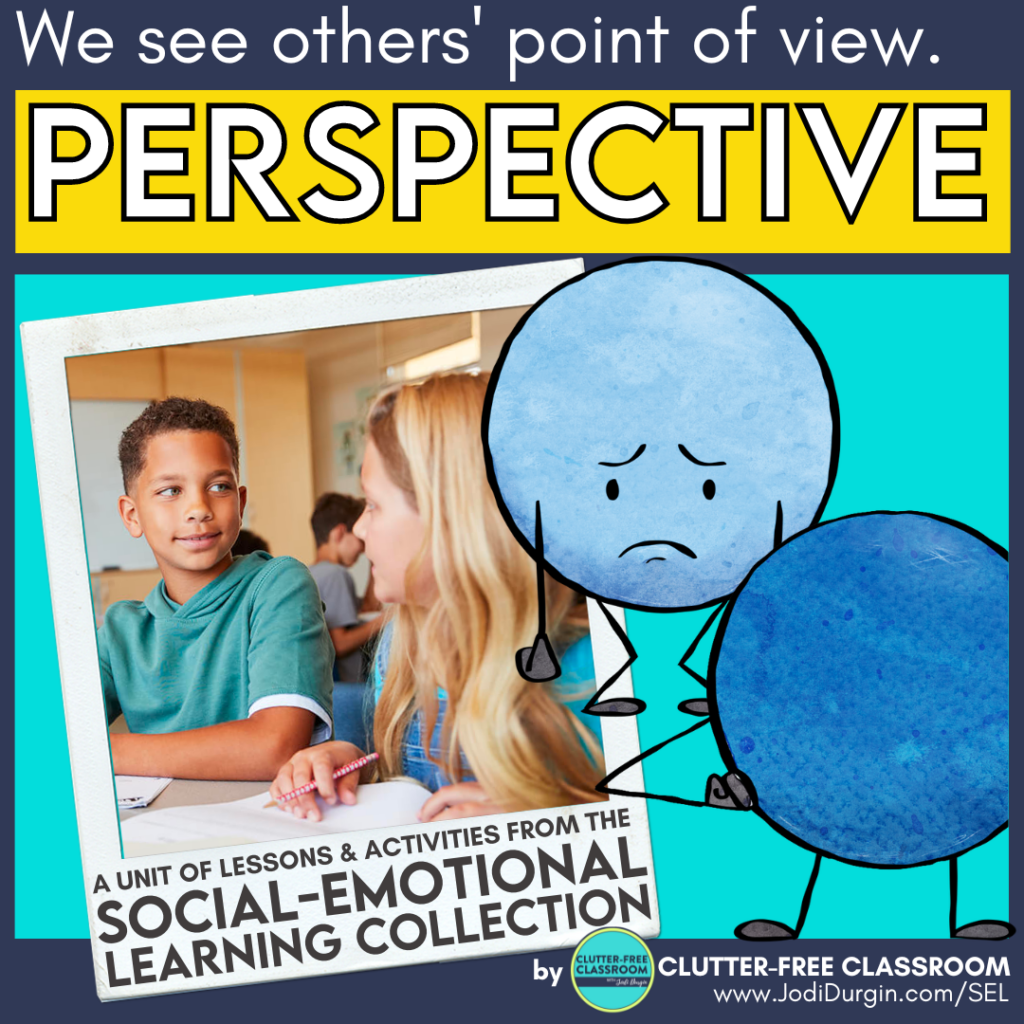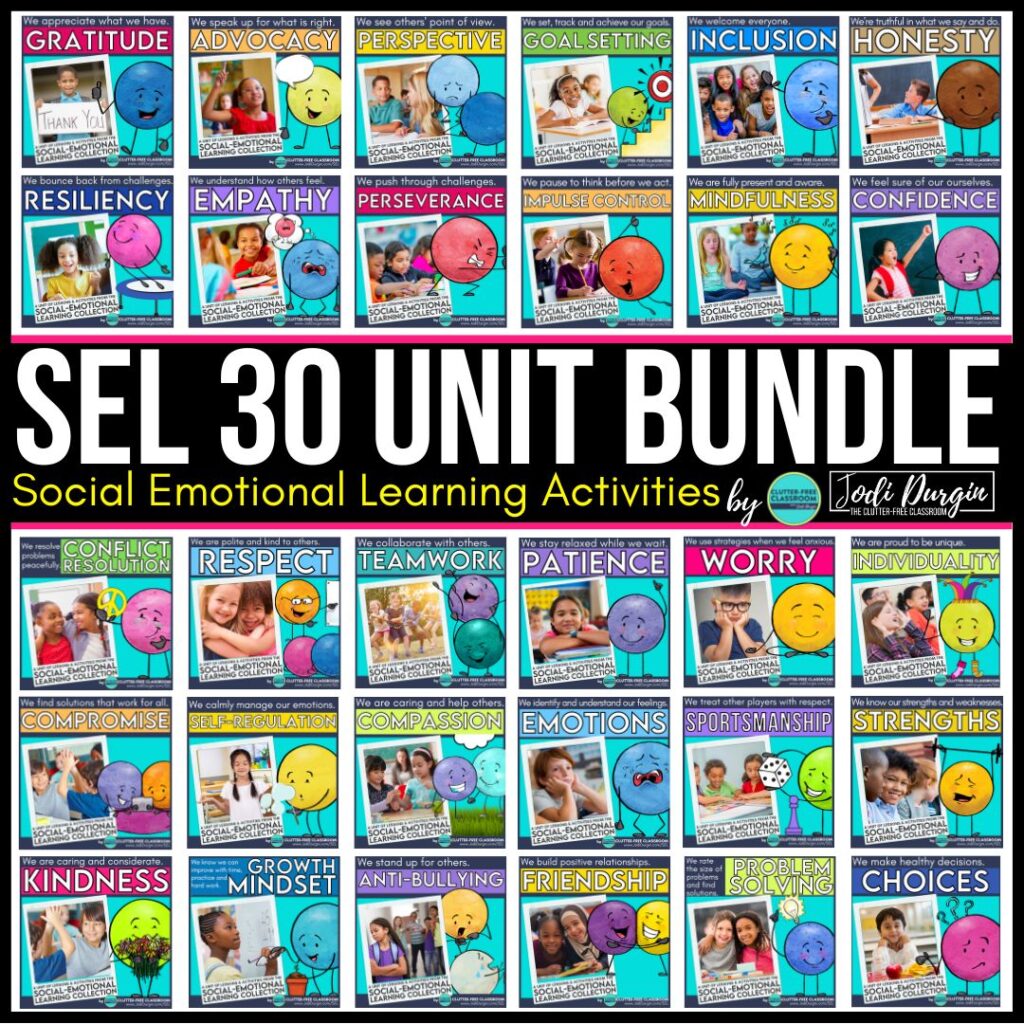If you are an elementary teacher looking to learn how to help your students take each other’s perspectives, then you found the right place! Perspective-taking skills prepare kids to use empathy to think about the point of view of another person. Students who are able to take on the perspective of someone else are better friends than students who cannot. In this post, we’ll go into detail about what perspective-taking is and why it’s important. In addition, we’ll share tips and ideas for how to teach perspective-taking skills in an elementary classroom setting. Read all about helping students advocate for themselves in and out of the classroom below!
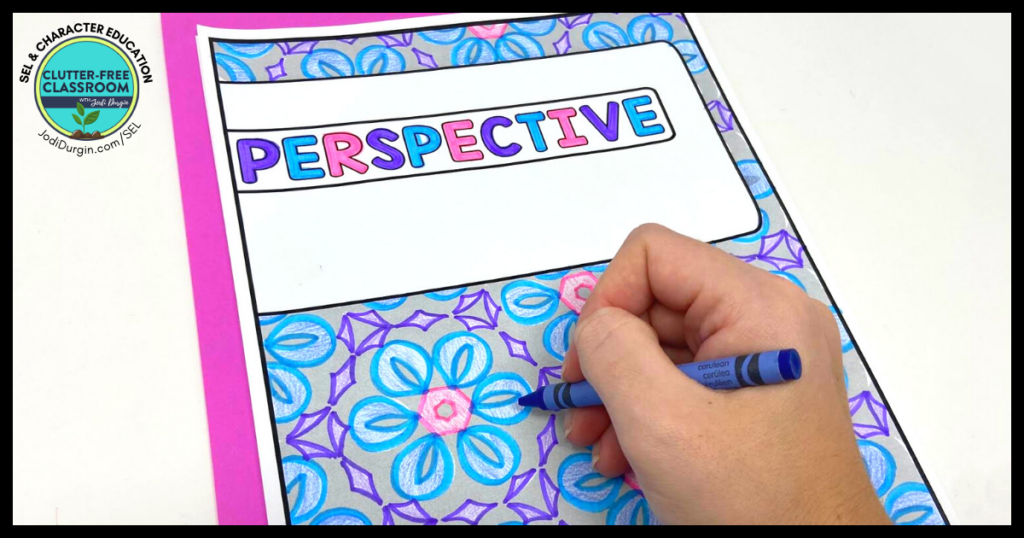
What Does Perspective-Taking Mean?
Perspective-taking is the ability of a person to look at a situation or concept from a different point of view of their own. This is important when solving problems and when experiencing conflict. It is also important when you notice a person or friend struggling.
Why is it Important for Kids to be able to Take Different Perspectives?
It is important for kids to be able to take different perspectives because it fosters their ability to look at the thoughts of someone other than themselves. It allows them to be able to evaluate what someone else might be feeling and understand situations from another person’s point of view. It’s an important building block towards empathy.
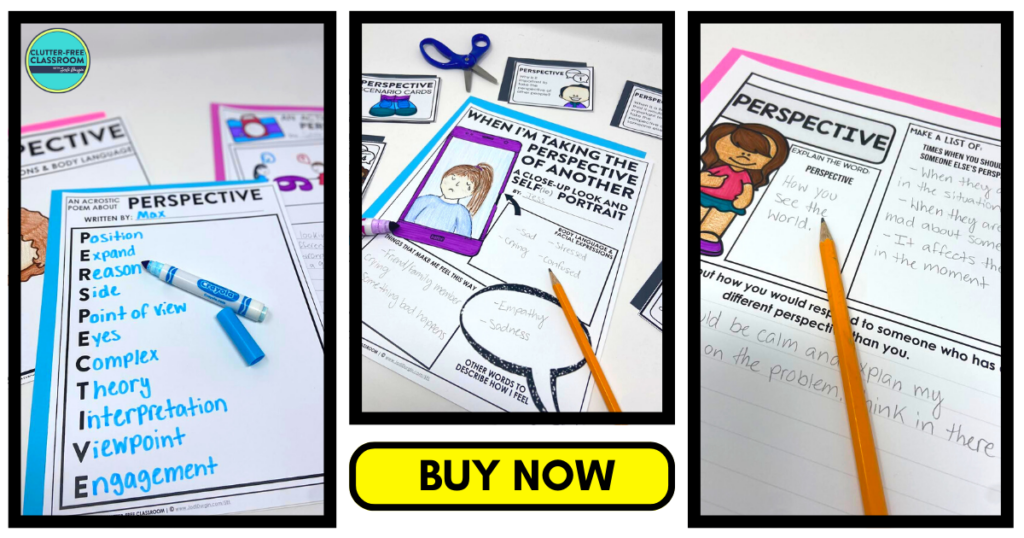
How Do I Know If I Need to Teach Perspective Taking in My Classroom?
The students in your 1st, 2nd, 3rd, 4th or 5th grade classroom would benefit from perspective taking lessons and activities if any of these statements are true:
- Students are struggling with empathy.
- Students are being unkind to each other.
- They are tattling on each other.
- Students are struggling to solve conflicts with peers.
- Students are having a hard time identifying emotions.
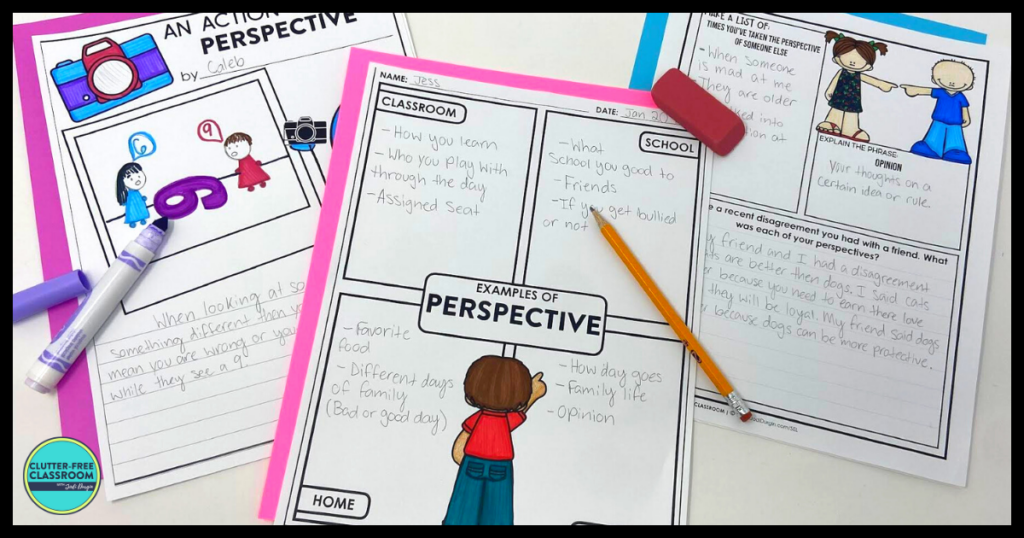
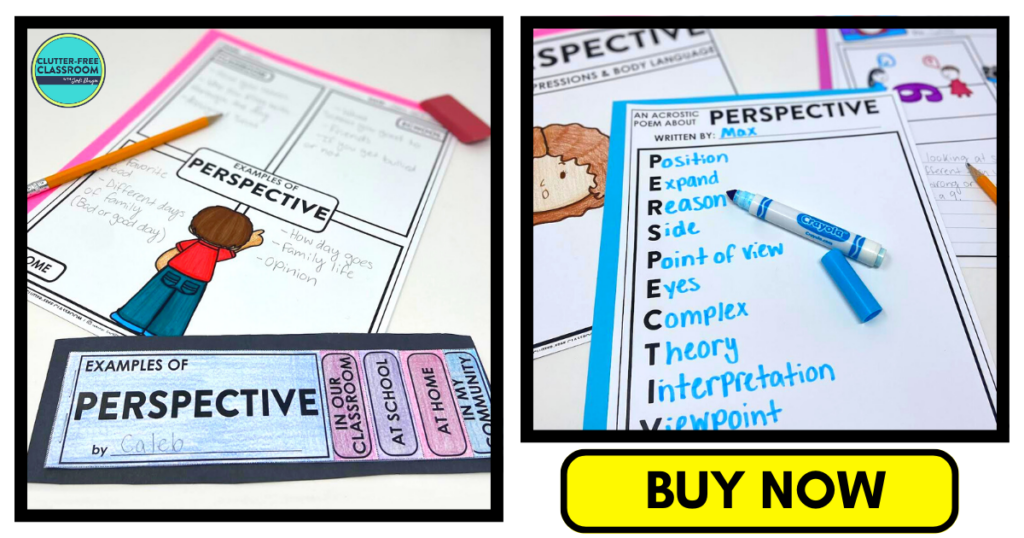
5 Reasons To Promote Perspective-Taking In Your Elementary Classroom
Below are 5 reasons to promote perspective-taking in your elementary classroom.
1. Students will develop empathy
Perspective taking and empathy go hand in hand. Students need to use empathy in order to take the perspective of someone else. Students will practice identifying how another person is feeling and will use that information to see a situation from another person’s point of view. That process isn’t possible without empathy.
2. Students will become better friends
Students who can take the perspective of someone understand the saying “to walk a mile in someone else’s shoes.” They will understand how another person is feeling and why and will be better able to support them, making them better friends. They will be much more compassionate individuals.
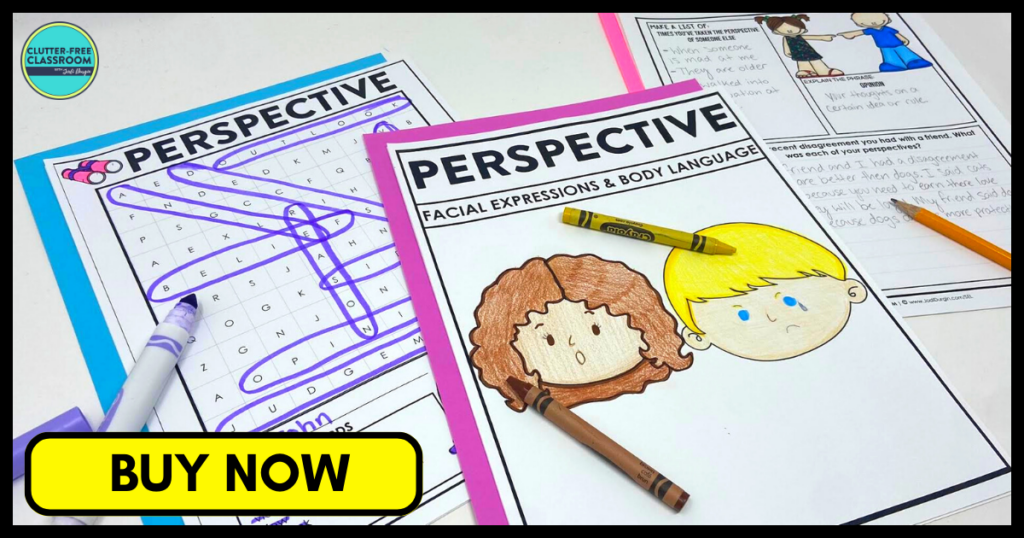
3. Your classroom community will grow
Using perspective-taking skills will cause your classroom community to grow because students will be thinking deeply about how another person is feeling and why. They won’t want to do anything to hurt another person’s feelings and will care about how their actions and words affect others. This will create a welcoming environment.
4. Students will have a better understanding of emotions
Students who can take the perspective of someone else have a better understanding of emotions because they identify emotions in others. Not only can they see what different emotions look like in others, but they can think about why a person is feeling that way. This will make them apply what they have been learning about emotions and friendship.
5. Students will be able to communicate better
Perspective-taking is key in healthy communication. Perspective-taking will help students communicate better with each other because they will understand how another person is feeling and why. This will help them stray away from conflict and express themselves in a healthy way.
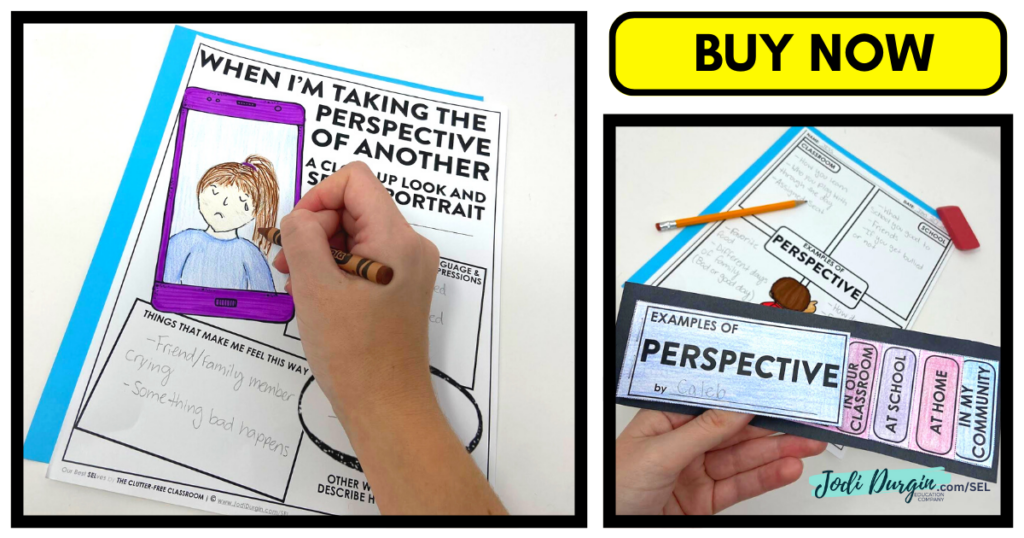
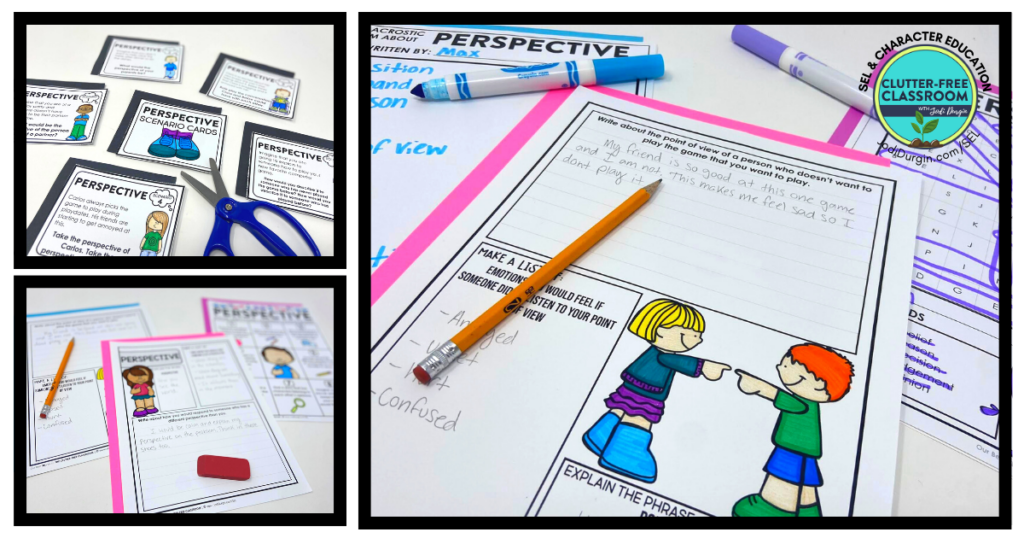
5 Tips and Ideas for Teaching Perspective-Taking
Below are tips and ideas for how to teach perspective-taking.
1. Read Aloud Picture Books about Perspective-Taking
Picture books are a great way to introduce and teach an SEL topic. It gets students thinking about the topic and activating their background knowledge. Check out this list of picture books for teaching perspective-taking!
2. Watch Videos about Perspective-Taking
There are tons of free online videos out there that promote social emotional learning. It’s a fun and engaging way to teach SEL skills that your students will enjoy. Check out these videos for teaching perspective-taking!
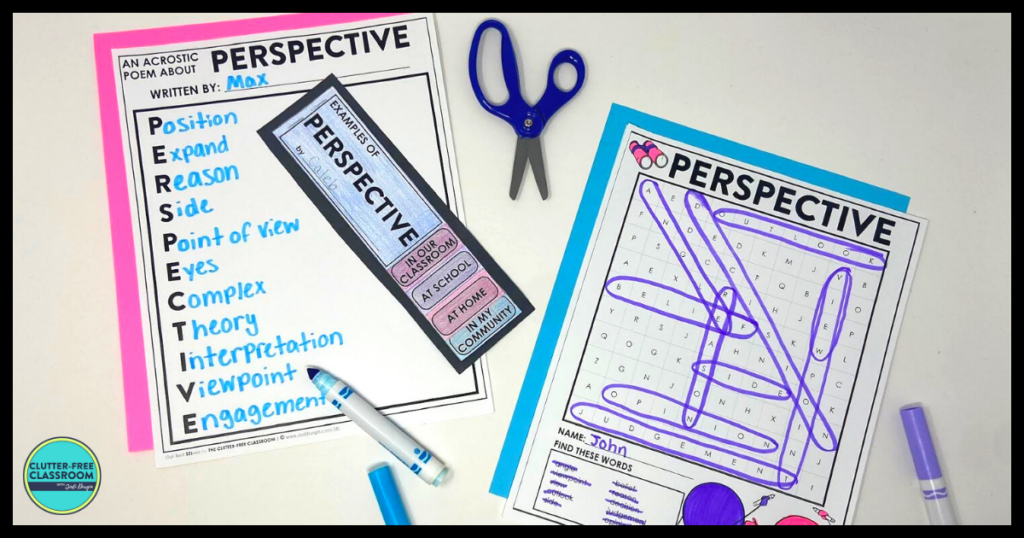
3. Explicitly Teach Vocabulary Related to Perspective-Taking
Vocabulary words can help students develop understanding of perspective-taking and create connections through related words. Our perspective-taking SEL unit includes ten vocabulary cards with words related to the SEL topic. It is important for students to be able to see, hear, and use relevant vocabulary while learning. One idea for how to use them is to create an SEL word wall as students learn the words.
4. Provide Practice Opportunities
When learning any skill, students need time to practice. Social emotional learning skills are no different! Our perspective-taking SEL unit includes scenario cards, discussion cards, choice boards, games, and much more. These provide students with opportunities to practice the skills independently, with partners or small groups, or as a whole class.
5. Integrate Other Content Areas
Integrating other content areas with this topic is a great way to approach this SEL topic. Our perspective-taking SEL unit includes reading, writing, and art activities.
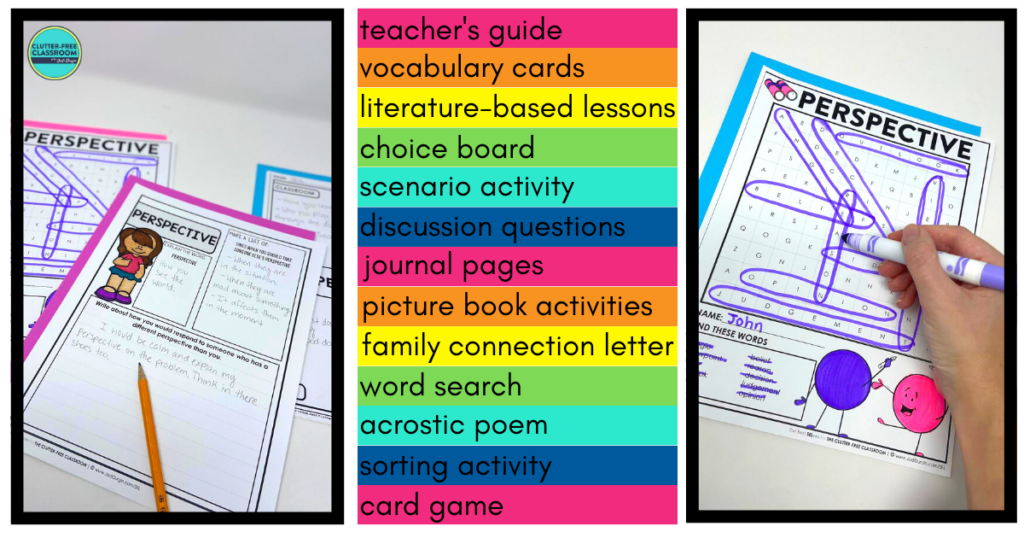
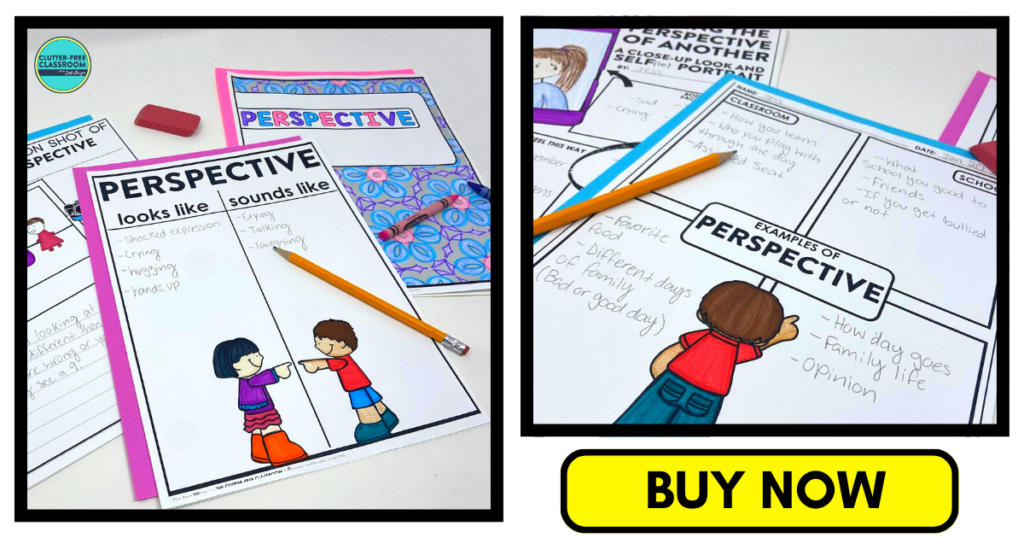
Skills Related to Perspective
Perspective, in the context of social emotional learning (SEL) or character education, refers to an individual’s unique point of view, understanding, or interpretation of a situation or experience. While “perspective” is the commonly used term, there are other words and phrases that can convey a similar meaning. These alternative words highlight different aspects of perception, viewpoint, and understanding. Here are some other words used in the context of perspective:
- Viewpoint: The particular way in which an individual sees, interprets, or understands a situation.
- Perception: The process of becoming aware of, interpreting, and making sense of sensory information and experiences.
- Outlook: A person’s general attitude, perspective, or mindset towards life and situations.
- Interpretation: The act of assigning meaning or significance to something based on one’s understanding and perspective.
- Angle: A specific approach or way of looking at a situation, issue, or problem.
- Lens: The filter or framework through which an individual perceives and makes sense of the world.
- Frame of reference: The set of beliefs, experiences, and cultural influences that shape an individual’s perspective.
- Point of view: The particular stance or position from which an individual observes and evaluates a situation.
- Attitude: A settled way of thinking, feeling, or responding that influences one’s perspective and behavior.
- Understanding: Grasping the meaning, significance, or implications of a situation from one’s own perspective.
These terms encompass the concept of perspective and reflect the various ways in which individuals perceive, interpret, and make sense of the world around them within the context of social emotional learning (SEL) or character education.
Download the SEL Activities
Click an image below to either get this individual perspective-taking unit or get ALL 30 SEL units!
In closing, we hope you found this information about teaching perspective-taking helpful! If you did, then you may also be interested in these posts.

